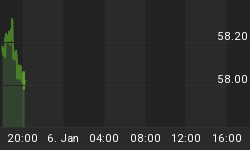The following is part of Pivotal Events that was published for our subscribers December 10, 2015.
Signs of The Times
"Companies have defaulted on $95bn worth of debt so far this year--the highest number of worldwide defaults since 2009."
- Financial Times, November 30.
"U.S. November Auto Sales Up As Promotions Spur Consumers."
- Reuters, December 1.
"The hunger for risk that's pushed up U.S. commercial real estate values is fading. The frenzied environment has stopped."
- Bloomberg, December 4.
"Five months after a debt-fueled rally in Chinese stocks turned into a $5 trillion rout, the bond market is testing authorities' ability to contain leverage without sparking a crash."
- Bloomberg, December 4.
"Hong Kong: [real estate] sales volume in the secondary market fell for the fourth straight month to a 20-year low. Home prices fell 4.5% after peaking in September."
- South China Post, December 4.
Credit Markets
"More than $1 tn in U.S. Corporate debt has been downgraded this year as defaults climb to a post-crisis high."
- Financial Times, December 4.
Tuesday's special memo noted that the BBB to Treasury spread had made the turn to the next phase of widening. The worst with the Shanghai panic was 242 bps and the correction took it to 217 bps on November 9th. The reversal was locked in as it went above 225 bps. Now it is at 230.
The breakout to the August troubles was getting above 200 bps in late July. Beyond 242 bps would say most spreads were heading to dislocated conditions.
The CCC Junk yield soared from 7.98% in June 2014 to 13.47% in the August panic. The high with the European Bond Crisis in 2011 was 16.32% and there was lots of comment. At 17.13% now, it is prompting little comment.
Instead, the whole of the financial world is focused upon the Fed and the endless conjecture about a miniscule increase in the administered rate. The debate has been and is absurd.
Market rates of interest have been increasing for some time and central bankers have very little influence in preventing credit contractions. If their theories worked the credit cycle would have been banished long ago. Once again, the cycle is turning from expansion to contraction.
We have been out of spread stuff since June 2014 and long-dated Treasuries since January of this year.
The TLT set its high at 135.34 in late January and each rally has been to a lower level. The low in June was 113.42 and it has been trading around 120 to 122. The 200 and 50-Day moving averages are at 121 and breaking one way or the other will indicate the next move. Momentum is neutral.
However, seasonal tendencies have rates declining into December and then rising.
Commodities
Crude oil has traded down to 36.6 today. In 2014 we expected crude to rally out to around that May and then suffer a significant decline. It was away behind declines in natural gas and base metals.
Once the high was in the target was a decline, in gold terms, to one-third or one-quarter of the high. The high was 107, which made the targets in dollar terms around 37 and around 27.
The latter is possible, eventually.
However, the decline is working on a seasonal low likely to be completed within the next 4 or 5 weeks.
Base metals were expected to set a seasonal low in or around November. On last year's "Rotation", the GYX became overbought against the 40-Week ma in May. The index was at 346 and the low has been 238 in late November.
This has recovered a little to 251. A test of the low could set up a tradable rally for metals and miners.
Default Rate

- Speculative grade provides the excitement.
- Another round of excitement is pending.
Investment Grade Issuance

- The issuance of investment-grade corporate bonds has been without precedence.
- In a contraction some of this could be down-graded.
Link to December 11, 2015 Bob Hoye interview on TalkDigitalNetwork.com: https://www.youtube.com/watch?v=8PrGlgkbypM&feature=youtu.be
Listen to the Bob Hoye Podcast every Friday afternoon at TalkDigitalNetwork.com
















